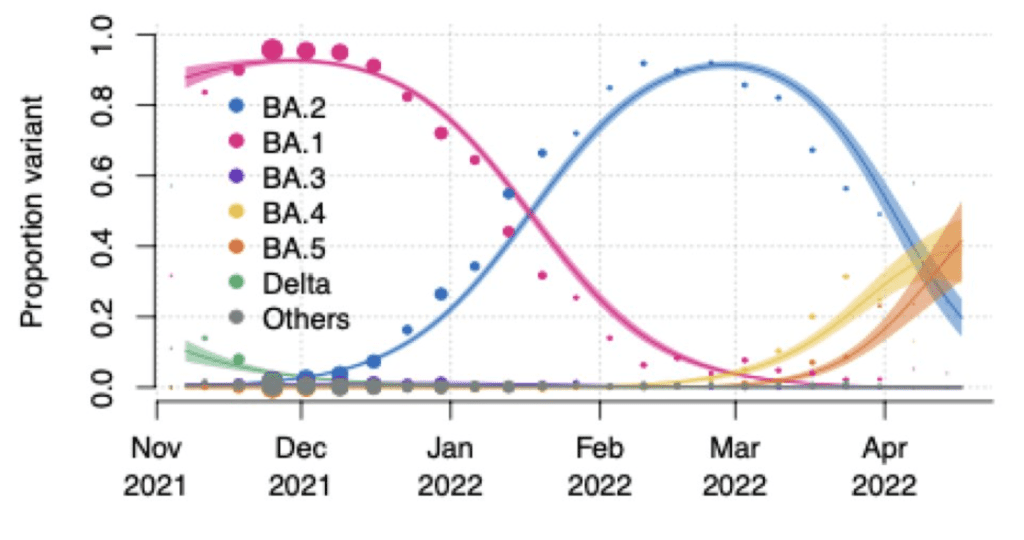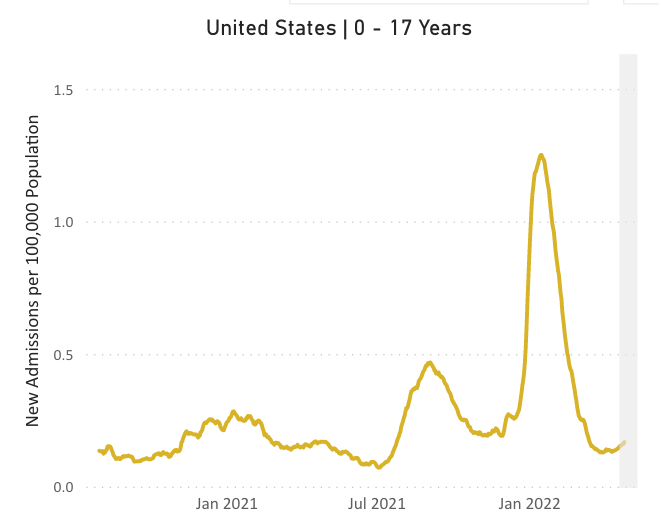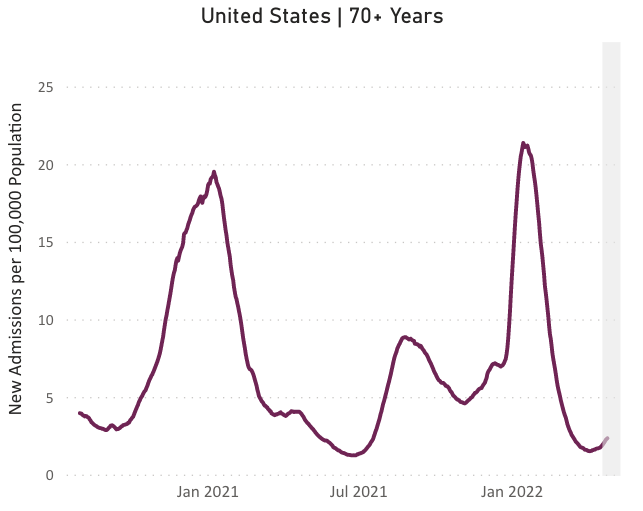The People’s CDC supports people the world over who want to know how to stay safer during the COVID-19 pandemic. Our Weather Report updates shed light on the COVID-19 situation in the United States.
The Current Situation – “The Weather”: The rising cases from the Northeast have spread across the country, with the very predictable trend of an increase in hospitalization now appearing as well.
Using the CDC transmission levels (not the hospitalization-focused “Community Levels”), we continue to see high case levels in the Northeast. High levels are now spreading throughout the Midwest & West and parts of the South.

While the CDC’s graph states less than 25% of U.S. counties have high transmission, the truth is 49% of Americans live in a county with high transmission – and another 22% live in a county with moderate transmission.
Right now, multiple waves of variants are washing over the country. BA2 (pink) has nearly replaced original Omicron while BA2.12.1 (red) is now becoming the major variant across the East.
This phenomenon is happening in other places – for instance, South Africa is being swept by new strains, BA4 & BA5. So far, these variants seem to be better at spreading but do not seem to be causing more severe disease.

Hospitalizations are a lagging indicator of who was infected 2-3 weeks ago. Hospitalizations, which have been increasing in the Northeast for the past few weeks, are now increasing in every region.

These increases are driven by changes among the youngest (<17) & oldest (>70) age groups.


Last week, 2,338 people died of COVID-19 in the U.S.
New data in a CDC report published last week revealed that by the end of February, 58% of the population & 75% of children <12 have had COVID. They had antibodies specific to a COVID infection – these were not antibodies from vaccination.

Importantly, the biggest jump occurred during the Omicron wave, when the administration chose to let the virus spread throughout the country, reassuring us using their go-to mantra: “We have the tools.” We did not. Many of us still do not.
Note: this study doesn’t draw on a purely random sample and may underestimate true infections. In particular, people without access to healthcare are more likely to have been left out.
Be prepared, whatever the weather: Vaccination rates remain virtually unchanged, with less than 46% of the population boosted
And while vaccination with boosting offers significant protection from hospitalization and death, it is far from foolproof: A recent analysis showed that more than 40% of the deaths during the Omicron wave were among vaccinated people.
With rising cases and waning vaccine efficacy, it is more essential than ever that we use layers of protection for ourselves and our communities. We continue to recommend the use of N95, KN95, or KF94 masks indoors. Check out Project N95.
Other layers might include minimizing the number of people you encounter, especially indoors; opening windows; using high-quality air filters (cleanaircrew.org); or using rapid testing prior to gatherings.
As cases rise, the role of early treatment becomes even more important. Paxlovid is a pill treatment that people can take by mouth, at home, with a prescription from a health care provider. It reduces hospitalization and death from COVID-19 infection by almost 90%.
But, it is inaccessible for many. Paxlovid hasn’t been approved for children under 12, we do not have universal access to healthcare in the US, and the current test-to-treat program is failing to address access equitably and failing to distribute existing treatment supplies. That these technologies simply exist does not mean they are being used, and they should not be seen as an excuse to overlook systemic inequities or abandon communal care.
Forecast: As this surge progresses, we expect hospitalizations to continue to rise in much of the country. As in past surges, we expect to see deaths begin to increase in the weeks after hospitalizations increase. Be careful, out there.
On Long Covid: Congratulations to @Patientled for securing $3M for future LC research. Check out their article in The Lancet to learn about common and prolonged Long Covid symptoms.
Tiny Tip:
#COVIDIsAirborne. Follow @joeyfox85 to become a ventilation expert
and to learn to stop covid spread in your home: